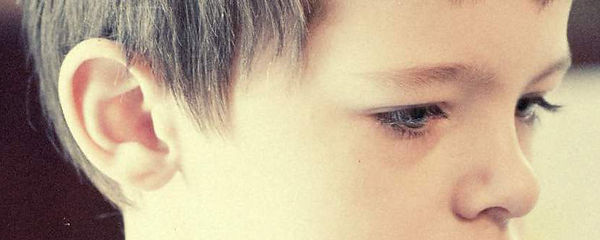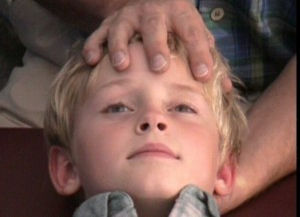
When things go wrong...
The Craniosacral system and Autism / Learning disabilities

In short:
Autism is related, in part, to a loss of flexibility and probable inflammation of the membrane layers surrounding the brain. It can create a restrictive force on the brain tissue that may cause strain on different brain structures. Dysfunction follows, as the effect of inner chaos.
As explained in the following video, the CSF holds several vital functions in the correct nutrition and performance of the brain. If its flow is compromised by a problem in the intracranial membranes, the brain won’t be able to grow and perform in a healthy way.
The severe the membrane’s dysfunction is, the poorer the performance we will see, and this is how we get many developmental and learning difficulties, from Autism to ADD and ADHD, through Asperger’s syndrome.
The first aim of Cranio-Sacral Therapy (CST) is to reduce any tissue tension or restrictions on vital nerves and centers that may be contributing to a chronic sympathetic state of stress. Increased balanced motion of the membrane surrounding the brain helps flush toxins and inflammation out of the brain tissue. As this occurs, it naturally can elevate biochemical processing, which increases the function of neurons and neurological pathways. Newfound motion of the brain tissue and fluid helps decrease the abnormal and often enormous strain the brain has been under.
“CST does not treat the “behaviors of autism”. It does treat the brain dysfunction of autism. It can augment and enhance the effects of other strategies.”
… like Neuroplasticity therapies to strengthen the brain.
In depth:
According to Upledger, Autism is related, in part, to a loss of flexibility and probable inflammation of the membrane layers surrounding the brain. This argument is further supported by another research done at Johns Hopkins University showing “increased levels of pro-inflammatory cytokines, neuroglial activation and inflammatory changes” in the cerebrospinal fluid of the autistic patients studied. This compromise can create a restrictive force on the brain tissue that may cause strain on different brain structures. When different brain parts have undue strain on them, the osteopathic model states that dysfunction follows.
Behavioral challenges can be associated with specific brain area dysfunction. For example the Hypothalamus regulates internal body functions such as temperature regulation, the Reticular activating system regulates sleep cycles, the Autonomic nervous system regulates stress responses, the Limbic system regulates emotional reactions to sensory information as well as down-regulating from reactions of stress, the Cerebellum regulates sensory motor and coordination.
“The fluid that flows inside the brain delivers nutrients, oxygen, hormones and neurotransmitters to the cells, and transports away wastes and toxins. The lack of healthy fluid exchange can further irritate and inflame the system adding to the dysfunction of the brain. Typical Autistic behavioral impairment in sensory processing, social skills, communication skills, and thinking styles might be the effects of inner chaos due to structural stress and strain. CST does not treat the “behaviors of autism”. It does treat the brain dysfunction of autism. It can augment and enhance the effects of other strategies.”
The first aim of Craniosacral therapy is to reduce any tissue tension or restrictions on vital nerves and centers that may be contributing to a chronic sympathetic state of stress. Increased balanced motion of the membrane surrounding the brain helps flush toxins and inflammation out of the brain tissue. As this occurs, it naturally can elevate biochemical processing, which increases the function of neurons and neurological pathways. Newfound motion of the brain tissue and fluid helps decrease the abnormal and often enormous strain the brain has been under.
Indications for Craniosacral therapy
1. Self-injurious behaviors, such as head banging, hair pulling, biting, teeth grinding. These pain-inducing behaviors may be a result of coping with a greater pain within the individual’s nervous system. Tight membranes can hurt.
2. Extreme stress behaviors and a constant state of fight-or-fight, aggression, or fear responses.
3. Sensory motor behaviors where an extreme need to get deep pressure input is frequent, especially pressure to the head.
4. Symptoms related to events such as high fevers, illnesses, or vaccine administrations.
5. Birth injury, such as where the birth process was prolonged, induced with strong medications, any use of vacuum extraction, or any other birthing experience that suggested a physical struggle.
Learning Disabilities
In a study published in the June 1973 issue of the Journal of the American Osteopathic Association, Upledger reported on a standardized craniosacral examination which he conducted on a mixed sample of 203 grade school children.
Overall the correlation between craniosacral motion and development problems in these children was extremely high.
Statistical analysis confirmed the craniosacral examination was a significant predictor (probably by chance of less than 1 in 1000) of designations of “not-normal,” behavioral problems, learning disabilities, obstetric complications and motor coordination problems.
Autistic children
Upledger has also been working with 28 autistic children in Genesee County, examining the craniosacral system, blood proteins by electrophoresis, physical structure, and hair trace mineral content.
Among these children, none had normal motion of the cranium.
Sources:
“CranioSacral Therapy: Helping Improve Brain Function”
http://www.iahe.com/images/pdf/Brain.pdf
“Autism Spectrum Disorder: How CraniosSacral Therapy Can Help”:
http://iahe.com/images/pdf/2294_001.pdf
“Unique Studies of CranioSacral System Being Conducted at MSU Osteopathic College”:
http://www.iahe.com/images/pdf/Article_-_MSU_Autism_Study-Upledger-Retzlaff.pdf
